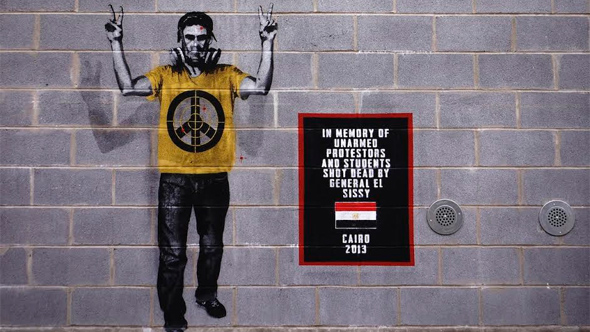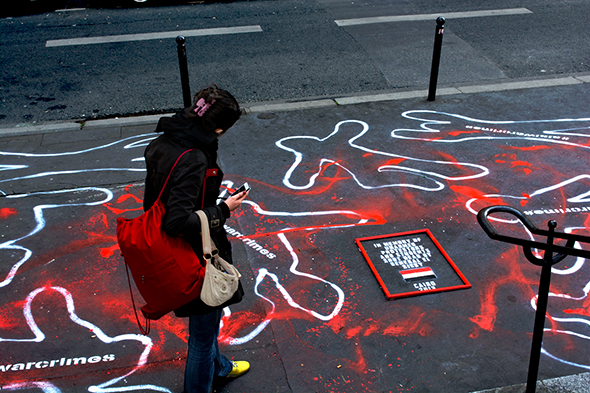
Since the 2011 uprising, the people of Egypt have faced horrific violence and an uncertain future. Following the ouster of President Mohamed Morsi in the summer of 2013, further chaos erupted between pro-Morsi supporters and those sympathetic to what has been dubbed the ‘Tamarod movement’. The protests left hundreds dead and thousands injured.
General El Sisi, the Commander-in-Chief of the Egyptian Armed Forces, is responsible for an estimated death toll of 800 and a further 3,994 injured during the violent clearing of the Rabaa sit-in on August 14, 2013, in which thousands were left trapped as the attack on protesters and citizens began, with rooftop snipers firing on those attempting to flee. El Sisi is also responsible for a crackdown on critical journalism so severe it has prompted the Committee to Protect Journalists to list Egypt as the third deadliest country in the world to be a journalist, behind only Syria and Iraq.
At present, permits are required for meetings of more than ten people, demonstrations are illegal, and the possibility of baseless denouncements of being a member of the Muslim Brotherhood means anyone is at risk of being charged and detained. On the campus of Cairo University, riot police have become a permanent presence; this deployment coincides with a rising number of deaths among students [VIDEO LINK – GRAPHIC CONTENT].
Mainstream international coverage has failed to illuminate the facts regarding the crackdown on those in opposition to El Sisi, including activist groups behind the 2011 revolution. Protesters whose mobilisation resulted in the jailing of former president Hosni Mubarak, and the restoration of the beginnings of a democratic process after decades of dictatorship, make up some of the 23,000 now detained. The Egyptian regime continues to deny legal and democratic processes to protesters attacked and killed, including a demonstration against a court’s decision to issue mass death sentences to supporters of the Muslim Brotherhood. While these events have taken place against widespread coverage describing the situation as a military coup, the United States has continued to provide military and financial aid.
The situation has escaped the attention of the international community and the EU, whilst only a distorted picture of the events has been conveyed by mainstream channels. Despite recent efforts by campaigners, including Amnesty International, to urge intervention from bodies including the UN Human Rights Council, El Sisi is expected to march on to the presidency, with support in the judiciary and the recent resignation of the government, the country’s institutions appear to have been rendered incapable of providing even the minimum levels of due process.
If the international community is to address the situation, further action and intervention must be made by the likes of Amnesty, HRW, FIDH, ISHR, CHRI and the many other NGOs, as well as moves by the EU to isolate the upcoming presidency in order to facilitate the restoration of a valid democratic election process (as Egypt has not signed the Statute of Rome, any efforts by the International Criminal Court will amount to nothing more than a paper trail without the enforcement of a War Crimes tribunal on General Sisi referred by the UN Security Council).
We must also work to maintain a more accurate presentation of the situation in Egypt, contest the whitewashing of historical fact and experience, and offer greater focus on the traumatic and difficult questions that must be addressed regarding the future of the country.
[youtube]https://www.youtube.com/watch?v=SY3naW1R2vU[/youtube]
This article was authored by International Street-Artists in Solidarity, many of whom have been using graffiti to protest General El Sisi, writing “VOTE for the PIMP” as a provocation that has resulted in hundreds of thousands of hashtag tweets | #SisiWarCrimes

Photos and video show solidarity street art responses in Brooklyn, Cairo and Paris. Photography by Anne Maarit







